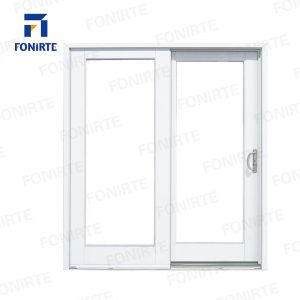
UPVC profiles are engineered with a unique multi-chamber system. Think of these chambers as several small, connected compartments within the frame. Among them, one chamber is specifically dedicated to drainage. This means that any water that manages to penetrate the outer layer is channeled into this dedicated space and efficiently directed outward, away from your interior. Whether it’s the fixed frame or the operable sash, both are designed to avoid water accumulation, significantly reducing the risk of leaks.
Another key factor is the type of window operation. Casement (or swing) UPVC windows offer superior water resistance compared to sliding windows. Why? Casement windows close with compression seals, creating a tight, gasketed barrier that leaves almost no room for water to infiltrate. On the other hand, sliding windows have a gap between the sashes necessary for movement, making them inherently more vulnerable to water ingress.
As a result, casement UPVC windows typically achieve a Grade 2 watertightness rating, while sliding windows generally reach Grade 3, based on industry performance standards. This makes casement styles the go-to choice for regions with frequent rainfall or extreme weather conditions.
So, if you’re looking for durability, energy efficiency, and peace of mind during stormy weather, UPVC windows—especially in casement styles—deliver proven performance backed by smart engineering.






